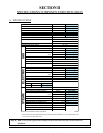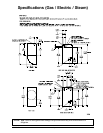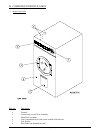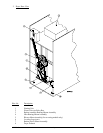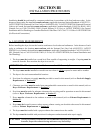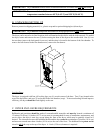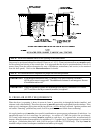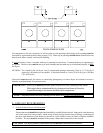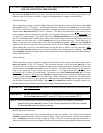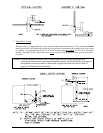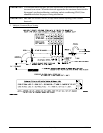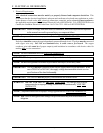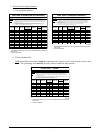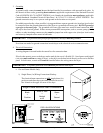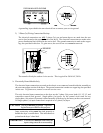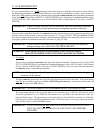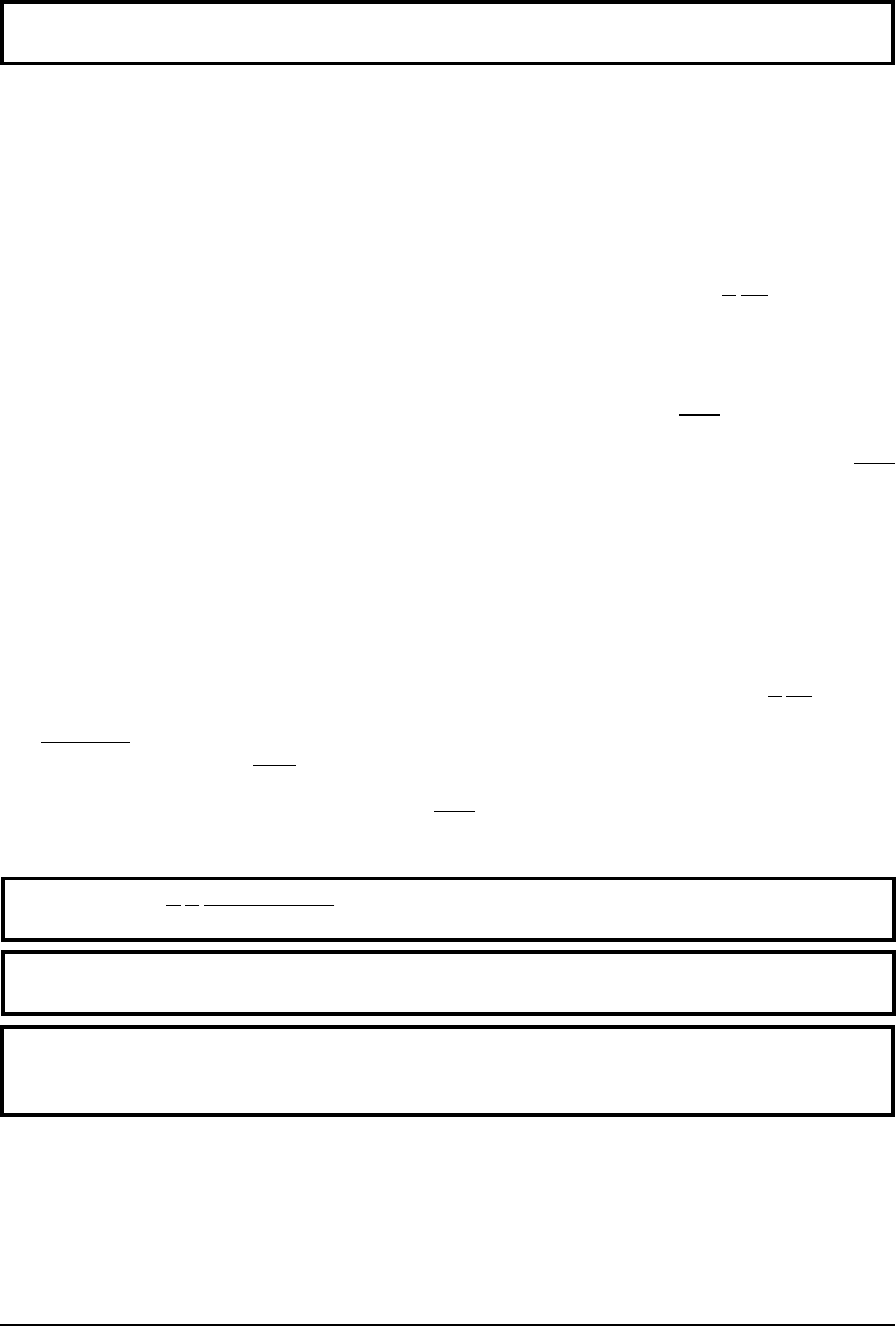
12 American Dryer Corp. 113226-6
CAUTION: IMPROPERLY SIZED OR INSTALLED EXHAUST DUCTWORK CAN
CREATE A POTENTIAL FIRE HAZARD.
The ductwork should be laid out in such a way that the ductwork travels as directly as possible to the
outdoors with as few turns as possible. Single or independent dryer venting is recommended.
Horizontal Venting:
When single dryer venting is used, the length of ductwork from the dryer to the outside exhaust outlet must
not exceed 25 feet (7.62 meters). The minimum diameter of this ductwork must be at least 8-inches
(20.32 cm). In the case of multiple (common) dryer venting, the distance from the last dryer to the outside
exhaust outlet must not exceed 15 feet (4.57 meters). The shape of the ductwork
is not critical as long
as the minimum cross-sectional area is provided. It is suggested that the use of 90° turns
be avoided; use
30° and/or 45° angles instead. The radius of the elbows should preferably be 1-1/2 times the diameter of
the duct. Including basket (tumbler)/dryer elbow connections or elbows used for outside protection from
the weather, no more than one (1) elbow should be used in the exhaust duct run. If more than one (1)
elbow is used, the cross-sectional area of the ductwork must be increased.
ALL ductwork should be
smooth inside with no projections from sheet metal screws or other obstructions, which will collect lint.
When adding ducts, the duct to be added should overlap the duct to which it is to be connected.
ALL
ductwork joints must be taped to prevent moisture and lint from escaping into the building. Inspection
doors should be installed at strategic points in the exhaust ductwork for periodic inspection and cleaning of
lint from the ductwork.
Vertical Venting:
When single dryer venting is used, the length of the ductwork from the dryer to the outside exhaust outlet
must not exceed 15 feet (4.57 meters). The minimum diameter of this ductwork must be at least
8-inches (20.32 cm). In the case of multiple (common) dryer venting, the distance from the last dryer to the
outside exhaust outlet must not exceed 15 feet (4.57 meters). The shape of the ductwork
is not critical as
long as the minimum cross-sectional area is provided. It is suggested that the use of 90° turns
be avoided; use 30° and/or 45° bends instead. The radius of the elbows should preferably be 1-1/2 times
the diameter of the duct.
ALL ductwork should be smooth inside with no projections from sheet metal
screws or other obstructions, which will collect lint. When adding ducts, the duct to be added should
overlap the duct to which it is to be connected.
ALL ductwork joints must be taped to prevent moisture
and lint from escaping into the building. Inspection doors should be installed at strategic points in the
exhaust ductwork for periodic inspection and cleaning of lint from the ductwork.
IMPORTANT: It is recommended that exhaust or booster fans not be used in the exhaust ductwork
system.
IMPORTANT: Exhaust back pressure measured by a manometer in the exhaust duct must be no less
than 0 and must not exceed 0.7 inches (1.74 mb) of water column (W.C.).
NOTE: When the exhaust ductwork passes through a wall, ceiling, or roof made of combustible
materials, the opening must be 2-inches (5.08 cm) larger than the duct (all the way around).
The duct must be centered within this opening.
Outside Ductwork Protection
To protect the outside end of the horizontal ductwork from the weather, a 90° elbow bent downward
should be installed where the exhaust exits the building. If the ductwork travels vertically up through the
roof, it should be protected from the weather by using a 180° turn to point the opening downward. In
either case, allow at least twice the diameter of the duct between the duct opening and the nearest obstruction.



